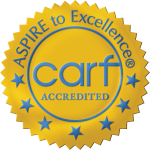Every day people with undiagnosed addictions walk into emergency rooms for medical care that may or may not be related to substance abuse. The question is, how many ER addiction patients walk out with any kind of intervention into their problem with drugs or alcohol? Are emergency physicians and nurses able to identify signs of a substance use disorder? What kind of intervention or treatment for addiction can they provide in the brief time before the patient is discharged?
NPR wrote up a study in which Yale physician-researchers tested how effective an ER department might be in conducting brief interventions and referrals to treatment for patients with addictions. The results showed that, with the right tools, emergency room doctors could be crucial first movers in getting patients into comprehensive treatment programs. The study also suggested that the greater the intervention into the patient’s addiction, the more likely the patient would seek comprehensive treatment after the ER visit.
ER addiction patients prescribed opioid treatment drugs were more likely to seek treatment
The researchers wanted to know if increased efforts at intervention would make it more likely for ER addiction patients to enter treatment. Patients in the study were randomly separated into three groups. One group was given a referral to a community treatment program. A second group was given a referral to treatment and a brief counseling intervention intended to motivate the patient to pursue treatment. The third group was given both the brief counseling intervention and the referral to treatment and also a prescription for the opioid treatment medications buprenorphine and naloxone.
So what did they find? Patients that received all three forms of intervention—brief counseling, referral, and medication for withdrawal/ maintenance—were much more likely to be in an addiction treatment program within 30 days. In fact, a whopping 78 percent of patients who walked out of the ER with prescriptions for opioid treatment drugs later checked into a treatment program. In this study, the prescribing of medication for opioid dependence made a big difference. Just 45 percent of ER addiction patients who received brief counseling and referral went on to enter addiction treatment. Even fewer (37%) pursued treatment in the group that received nothing but a referral.
The takeaway: screening and brief intervention for ER addiction patients works
Three takeaways from the results of this study of emergency room addiction screening are:
- Successful addiction treatment can be initiated in the brief time in which an ER physician interacts with a patient who is struggling with a substance abuse problem.
- Higher levels of intervention make it more likely a patient will seek treatment independently.
- Medications for opioid withdrawal and dependency provide a better bridge out of addiction than referral or counseling alone.
The researchers were careful to note that more studies need to be done to confirm the results of this one, which was conducted at just one hospital. The NPR article adds that because the ER addiction patients in the study received the addiction services and prescriptions for free, there could be questions about cost and implementation that deserve more attention.
While there are complicating factors involved in empowering ER doctors to prescribe opioid dependence medications to patients outside the rigid boundaries of a medical study, this results of this research should point the medical and addiction treatment communities in the right direction. As more physicians are given the tools and training to screen for addiction and provide simple intervention services, more people struggling with substance use should find their way to treatment. Of course, whether these patients are able to find addiction treatment providers that don’t have impossibly long waiting lists is a different matter.

